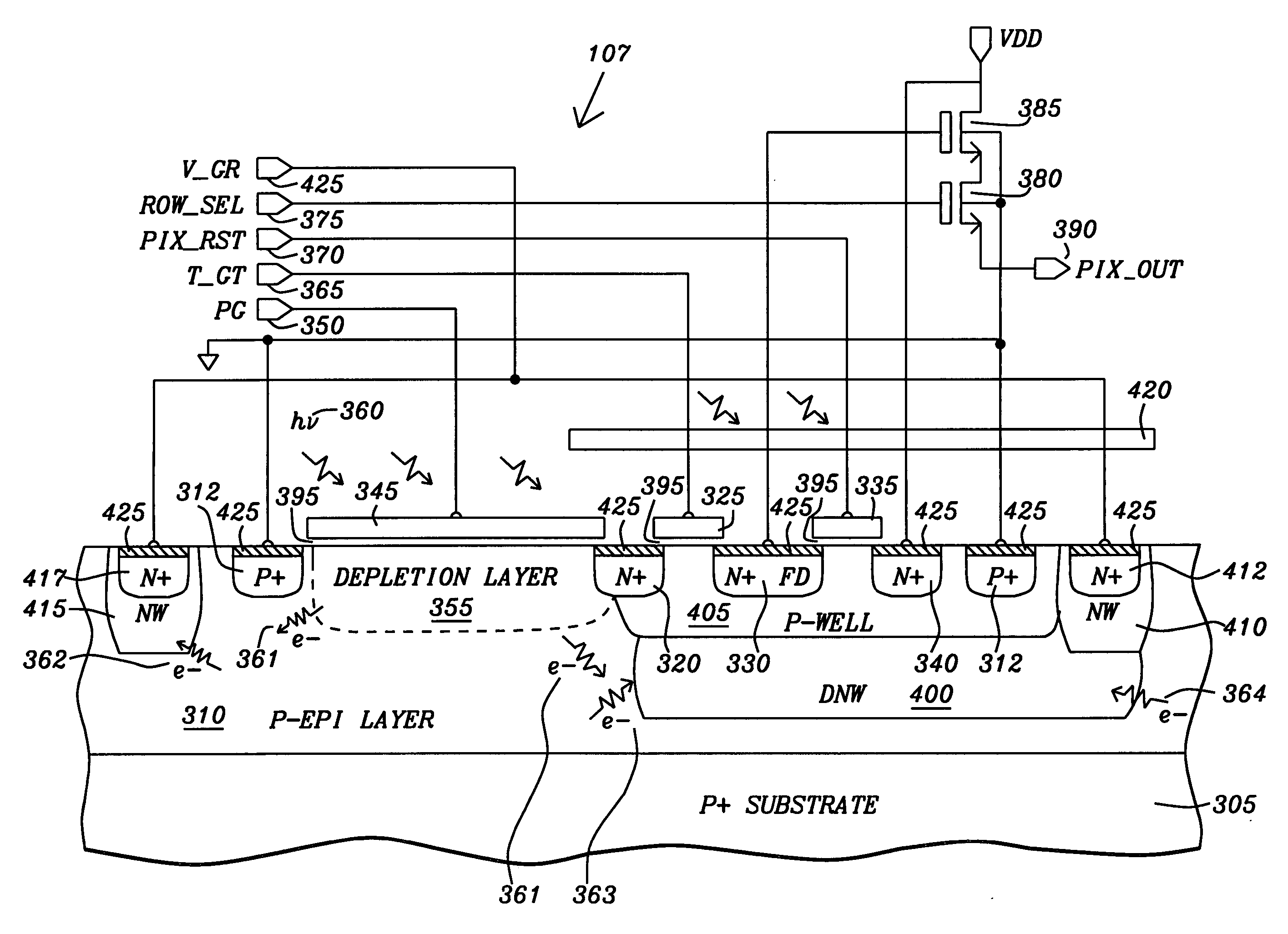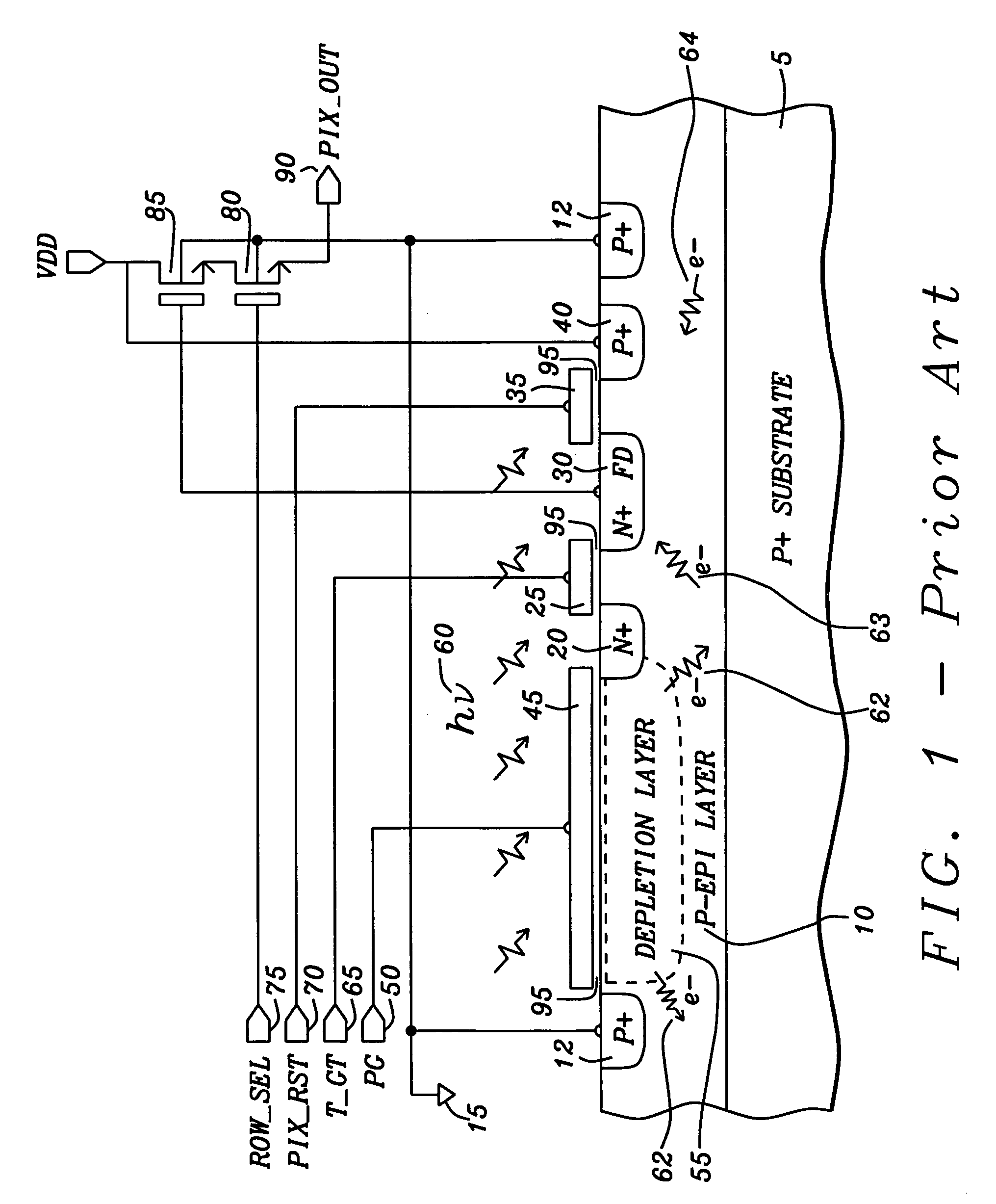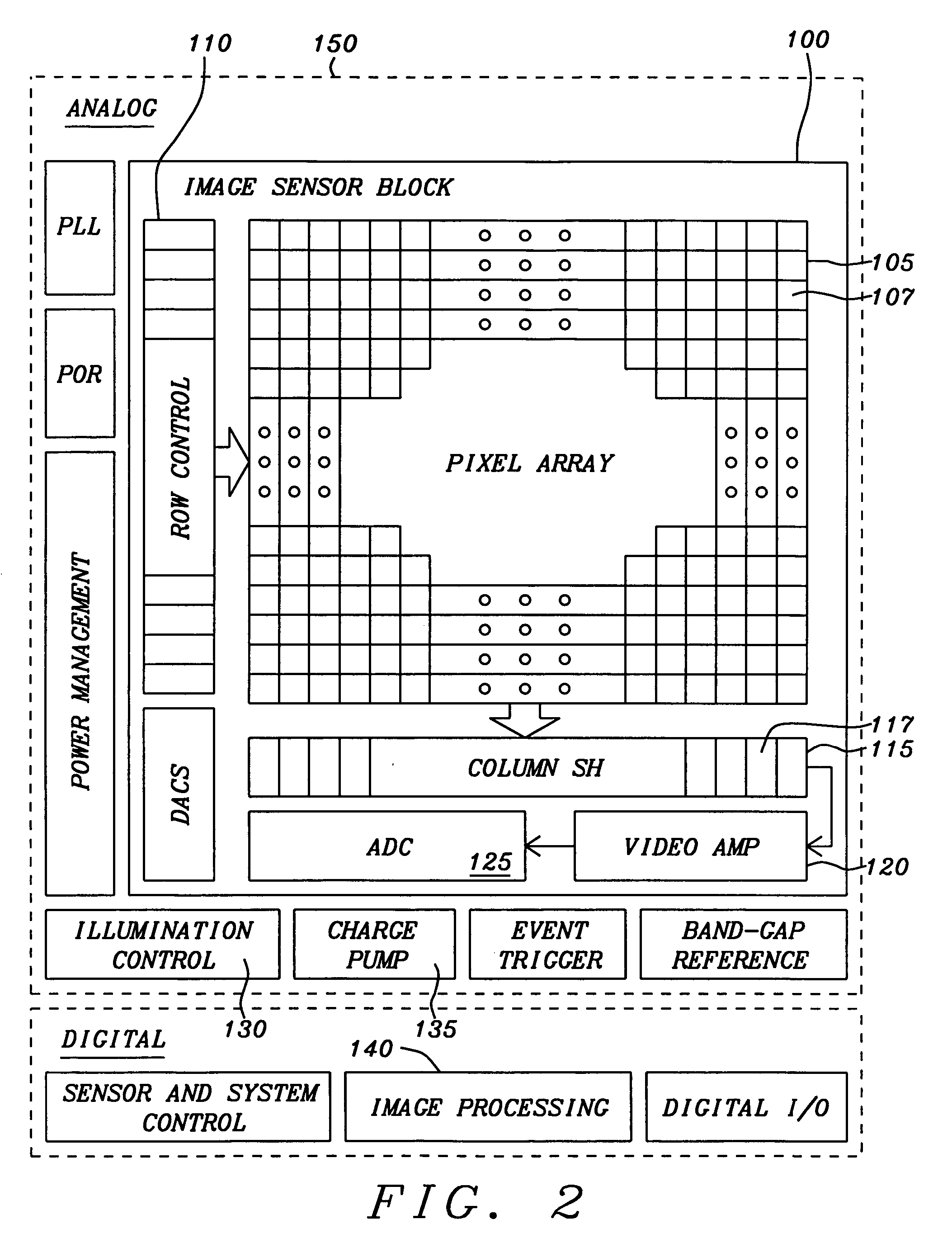Snapshot CMOS image sensor with high shutter rejection ratio
a sensor and shutter rejection technology, applied in the direction of semiconductor devices, basic electric elements, electrical appliances, etc., can solve the problems of complicated control of this type of read out, motion artifacts, and distortion of images, so as to prevent the generation of photoelectrons, prevent the leakage of substrate charge, and prevent the generation of substrate charg
- Summary
- Abstract
- Description
- Claims
- Application Information
AI Technical Summary
Benefits of technology
Problems solved by technology
Method used
Image
Examples
Embodiment Construction
[0047] Fast moving pattern recognition systems, such as machine vision and robot control system require arrays of snapshot CMOS active pixel image sensors with an ultra high light shutter rejection ratio for detecting moving objects without motion artifacts. Light leakage to the storage node must be minimized to provide snapshot images without motion artifacts.
[0048] Refer to FIG. 2 for a discussion of an image processing application specific integrated circuit 150. The image processing application specific integrated circuit contains an image sensor 100. The image sensor 100 has an array 105 of snapshot photogate CMOS active pixel image sensors, row control circuitry 110, column sample and hold circuitry 115, a video amplifier 120, and an analog-to-digital converter 125.
[0049] The image processing application specific integrated circuit 150 has photogate active pixel image sensor array 105 in a preferred implementation is arranged an array of 100×100 active pixels for pattern rec...
PUM
 Login to View More
Login to View More Abstract
Description
Claims
Application Information
 Login to View More
Login to View More - R&D
- Intellectual Property
- Life Sciences
- Materials
- Tech Scout
- Unparalleled Data Quality
- Higher Quality Content
- 60% Fewer Hallucinations
Browse by: Latest US Patents, China's latest patents, Technical Efficacy Thesaurus, Application Domain, Technology Topic, Popular Technical Reports.
© 2025 PatSnap. All rights reserved.Legal|Privacy policy|Modern Slavery Act Transparency Statement|Sitemap|About US| Contact US: help@patsnap.com



